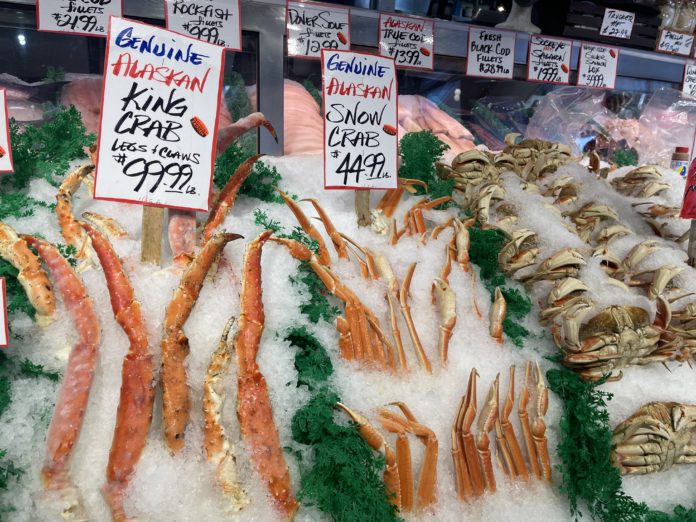
First a trade war, then a battle against an infectious virus and now a real war are all affecting Alaska seafood exports.
Shipments to China fell from as high as 30% of Alaska’s total seafood export value in the 2010s to 20% in 2020. “The U.S.-China trade war has displaced $500 million of Alaska seafood,” Jeremy Woodrow, executive director of the Alaska Seafood Marketing Institute, told legislators last week.
And though people bought more seafood to prepare at home during the COVID-19 pandemic, sales to restaurants and food services fell by 70%, Woodrow said. The food service market “still hasn’t fully recovered.”
The Alaska product at risk in Russia’s invasion of Ukraine is pink salmon roe. Eastern Europe is a major buyer of the product, he said. “It’s a regional preference.”
Alaska in 2021 shipped to Ukraine about $20 million of pink salmon roe — mostly frozen, salted and packed in tubs — Woodrow said in an interview after his presentation to the House Fisheries Committee on March 3.
Last year’s pink salmon harvest was excellent, producing a lot of roe for sale. This year’s export sales will depend on the commercial catch and the war in Ukraine. The big pink salmon returns come in July, and it’s hard to know what the market in Eastern Europe and particularly Ukraine will look like later this summer, Woodrow said.
“A little bit stays here in the U.S.,” he said, but most pink roe goes overseas, including to Ukraine’s neighbors Poland, Moldova and Lithuania and a smaller quantity to Japan and China. Japanese consumers prefer chum salmon roe.
Russia is a competitor to Alaska in seafood sales, and Woodrow told lawmakers that Russia is investing $7 billion in its processing and cold storage operations, new vessels and promotions. Though, in the context of the invasion of Ukraine and global sanctions against Russia, he said, “I’m not sure how that is going to work for them moving forward.”
A bigger challenge for Alaska seafood sales — worth $4.7 billion wholesale in 2019, before COVID-19 — is finding other buyers for lost exports to China, Woodrow said. “That China dot (on the global sales map) is getting smaller every year since 2018.” The loss of exports to China has to be absorbed elsewhere, he said.
“Southeast Asia is a growing market as an alternative to China,” he told lawmakers.
After a 20-year effort by ASMI and the Alaska seafood industry, China grew into the state’s No. 1 seafood export market before the trade war cut deeply into sales starting in 2018, Woodrow said. China’s tariffs on U.S. seafood imports are four times higher than on deliveries from Canada, Norway or Russia, he said.
“Alaska seafood needs global market diversification now more than ever,” the House members heard in ASMI’s presentation.
The marketing agency receives no state general fund dollars. This year’s ASMI budget is funded with $16 million from a voluntary self-assessment on the industry and $10 million in federal money. The agency also benefitted from $7 million in one-time money under the American Rescue Plan Act, intended to help rebuild sales hurt by the pandemic-induced slowdown.
“We are optimistic for 2022,” Woodrow said. Higher value and strong market demand as the world pulls out of pandemic closures should help Alaska fisherman and processors. Export sales picked up about 7% from 2020 to 2021, but still were down 10% from pre-COVID numbers.
And ASMI is always looking for new marketing opportunities, particularly as people return to dining out and socializing with groups. “We know that Alaska will not take over the turkey at Thanksgiving,” he said, but the marketing agency is working to promote seafood as people socialize more.
“We want to make sure Alaska seafood is part of the celebration.”














